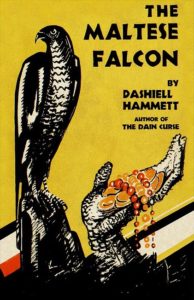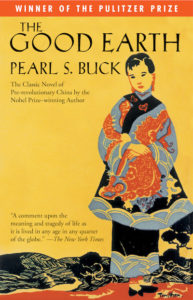In the moment, you often can’t tell which books are which. The Great Gatsby wasn’t a bestseller upon its release, but we now see it as emblematic of a certain American sensibility in the 1920s. Of course, hindsight can also distort the senses; the canon looms and obscures. Still, over the next weeks, we’ll be publishing a list a day, each one attempting to define a discrete decade, starting with the 1900s (as you’ve no doubt guessed by now) and counting down until we get to the (nearly complete) 2010s.
Though the books on these lists need not be American in origin, I am looking for books that evoke some aspect of American life, actual or intellectual, in each decade—a global lens would require a much longer list. And of course, varied and complex as it is, there’s no list that could truly define American life over ten or any number of years, so I do not make any claim on exhaustiveness. I’ve simply selected books that, if read together, would give a fair picture of the landscape of literary culture for that decade—both as it was and as it is remembered. Finally, two process notes: I’ve limited myself to one book for author over the entire 12-part list, so you may see certain works skipped over in favor of others, even if both are important (for instance, I ignored Dubliners in the 1910s so I could include Ulysses in the 1920s), and in the case of translated work, I’ll be using the date of the English translation, for obvious reasons.
For our fourth installment, below you’ll find 10 books that defined the 1930s.
 Dashiell Hammett, The Maltese Falcon (1930)
Dashiell Hammett, The Maltese Falcon (1930)
He is a dream man in the sense that he is
what most of the private detectives I worked with would like to have
been and in their cockier moments thought they approached. For your
private detective does not—or did not ten years ago when he was my
colleague—want to be an erudite solver of riddles in the Sherlock Holmes
manner; he wants to be a hard and shifty fellow, able to take care of
himself in any situation, able to get the best of anybody he comes in
contact with, whether criminal, innocent by-stander or client.
The Maltese Falcon was an instant bestseller when it was published in hardcover, and saw seven printings in 1930. Unlike some of the other novels on this decade’s list, in this case the critics loved it as well as the readers. In the New Republic, Donald Douglas wrote that the novel showed “the absolute distinction of real art” and in The Judge, Ted Shane wrote that “the writing is better than Hemingway; since it conceals not softness but hardness.” In the New York Evening Graphic, Gilbert Seldes wrote that The Maltese Falcon was “the real thing and everything else has been phony.” No surprise then that we’re still reading it today. Pearl S. Buck, The Good Earth (1931)
Pearl S. Buck, The Good Earth (1931)But the novel—and Buck’s work in general—is not without controversy. Highbrow critics found her prose lacking. “Pearl’s Asian subjects, her prose style, her gender, and her tremendous popularity offended virtually every one of the constituencies that divided up the literary 1930s,” wrote her biographer Peter Conn. “Marxists, Agrarians, Chicago journalists, New York intellectuals, literary nationalists, and New Humanists had little enough in common, but they could all agree that Pearl Buck had no place in any of their creeds and canons.” Buck, though born in West Virginia, had grown up in China, but Chinese intellectuals and even officials were offended by her depiction of China, to the point of denying her entry to the country.
Since the 1930s, Puck has become decidedly unfashionable. “In the years after World War II, Buck’s literary reputation shrunk to the vanishing point,” Conn writes in the preface to his Pearl S. Buck: A Cultural Biography.
She stood on the wrong side of virtually
every line drawn by those who constructed the lists of required reading
in the 1950s and 1960s. To begin with, her principal subjects were women
and China, both of which were regarded as peripheral and even frivolous
in the early postwar years. Furthermore, she preferred episodic plots
to complex structures and had little interest in psychological analysis.
In addition to all that, she was not a felicitous stylist, and she even
displayed a taste for formulaic phrases. Needless to say, none of this
endeared her to that vast cultural heartland stretching from the East
River to the Hudson. ... [mehr] https://lithub.com/a-century-of-reading-the-10-books-that-defined-the-1930s/
Irma S. Rombauer, The Joy of Cooking (1931)
Aldous Huxley, Brave New World (1932)
Franz Kafka, The Metamorphosis (1937 (first single-volume English translation))
Margaret Mitchell, Gone with the Wind (1936)
Djuna Barnes, Nightwood (1936)
Dale Carnegie, How to Win Friends and Influence People (1936)
Zora Neale Hurston, Their Eyes Were Watching God (1937)
John Steinbeck, The Grapes of Wrath (1939)
Keine Kommentare:
Kommentar veröffentlichen